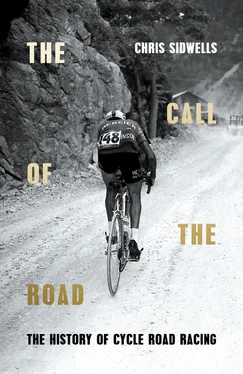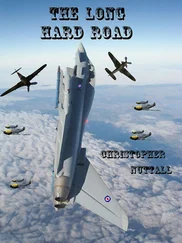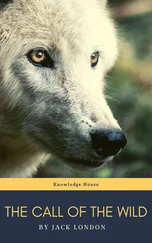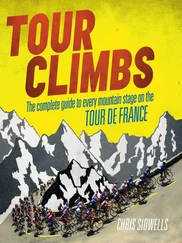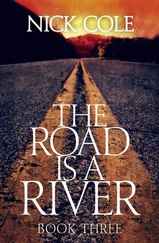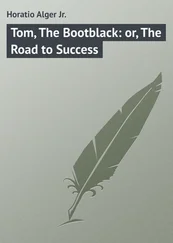Spanish racers were insular for a long time. The first Spaniard to take part in the Tour de France, Salvador Cardona, didn’t do so until 1928, when by coincidence, and incredibly considering the journey they had to take in order to get there, the first Australians took part. Cardona, who won the Volta a Catalunya in 1931, was the first Spanish racer to win a stage in the Tour de France in 1929. But even Cardona didn’t ride many races outside Spain, and he certainly didn’t win another big one. He was content to be one of the best in late Twenties and early Thirties Spanish bike racing.
Mariano Carnado was another star of that era. He won the Volta a Catalunya a record seven times, and in 1930 won Spain’s other big race, the Tour of the Basque Country, which started in 1924 and so also has a longer history, albeit interrupted, than the Spanish Grand Tour, the Vuelta a España. Frenchman Francis Pélissier won the first Tour of the Basque Country. It’s a rugged race over tough terrain, and it doesn’t always get the best of weather. The Basque region is close to the Atlantic coast and gets plenty of weather systems in spring. Carnado’s 1930 victory was the first by a Spaniard, and the last for a while.
But that wasn’t due to lack of Spanish contenders. It was simply because there was no Tour of the Basque Country from 1931 until 1935, when Gino Bartali of Italy won. Then the Spanish Civil War intervened, and scuppered the race for a long time. It wasn’t resurrected until 1969, when the five-time Tour de France winner Jacques Anquetil won, but it has grown in stature since. The Tour of the Basque Country is still a very tough race, and as well as being held in high esteem it’s also perfect preparation for Liège–Bastogne–Liège, and another big race in the French-speaking part of Belgium, La Flèche Wallonne.
The first La Flèche Wallonne, or the Walloon Arrow (several Belgian races have the word ‘arrow’ in their titles) was held in 1936. It’s not as big as Liège–Bastogne–Liège is now, but at one time they were seen as being on a par: especially when both races were held over one weekend, called Weekend Ardennais.
Once they were separated, La Flèche Wallonne’s profile suffered a dip because it didn’t have a defined route. Where Liège–Bastogne–Liège had its set-piece climbs, and Paris–Roubaix its cobbled roads, passages of the races that fans look forward to and talk about and compare performances on, for a while La Flèche Wallonne was just a race around the hills between Liège and Charleroi. Sometimes it went east to west, sometimes west to east. It was always hard, though, and always prized among knowledgeable fans and by those who won it. It also satisfied a thirst for bike racing among the huge Italian community working in the steel mills and mines of the surrounding Meuse area. But it had no defining shape. That changed once the Mur de Huy was included in the race route.
Today, La Flèche Wallonne starts in Charleroi and heads east on a big loop north of the Meuse, before plunging down into Huy for the first time. The race then builds in a crescendo, with three ascents of the Mur de Huy in quickening succession on the way to the finish at the top of the final ascent.
But back to Spain and the birth of cycling’s third Grand Tour, the Vuelta a España. When the Tour of the Basque Country was resurrected in 1969, it was done by a cycling club from the Basque city of Eibar, a club with a history of successful race organization. The club’s first promotion was in April 1932 with a race created to celebrate Spain’s first birthday as a republic, called Grand Premio Republica. It was a five-stage race from Eibar to Madrid and back, and is seen in Spain as the template for the Vuelta a España.
According to Lucy Fallon and Adrian Bell in their book Viva la Vuelta (Mousehold Press, 2005), the idea for a Tour of Spain came from a former racer called Clemente López Doriga. He saw the press as the most likely promoters, so he lobbied them tirelessly because he felt passionately that it was time Spain had its own national Tour.
Several things were against him. Spain had terrible roads, which weren’t even a fully joined-up network in the Thirties. The cost would be high and the country was poor. Finally, there was a severe lack of accommodation, especially away from the coast. There just weren’t the hotels in Spain there are now, and for years accommodation for riders on the Vuelta a España was basic to say the least.
Still, López Doriga persevered and eventually attracted interest from Juan Pujol, a director of the Madrid daily newspaper Informaciones . Pujol was an idealist who wrote when announcing the first ever Vuelta in 1935 that it would be ‘an incarnation of patriotic exaltation’. Spain was in turmoil and just over a year away from civil war, but Pujol was undeterred.
On Monday, 29 April 1935, fifty riders lined up at one of the Madrid gates to start the first Vuelta a España. It was a good field, but not the best in the world because the 14-stage race finished in Madrid only three days before the Giro d’Italia started in Milan. For a long time its location in the calendar stifled the Vuelta as a truly international race. An April start and May finish meant it was crammed between the northern classics and the start of the Giro d’Italia. So the Vuelta, while always important to Spanish teams, was less so for other nations.
It became a race that the great riders of each generation would do during their careers, and try to win, but unless they were Spanish it wasn’t one they did every year. Even some Spaniards didn’t do it every year. The five-time Spanish Tour de France winner Miguel Indurain started the Vuelta nine times during his thirteen-year career, but only finished four, with a best placing of second overall in 1991.
Things began to change after 1995, when the Vuelta was swapped to late August/early September. Then, when the UCI World Tour was formed, it included the Vuelta as one of the three Grand Tours. All World Tour teams must take part in all World Tour races. So now, although it’s still the third Grand Tour in status behind the Tour de France and Giro d’Italia, the Vuelta a España is a great race, often a very interesting one, and it’s on the rise.
But going back to its origins, of the fifty riders that started the first Vuelta, thirty-two were Spanish, six were Belgians, four were Italians, plus two each from France, Austria, Switzerland and Holland. Mariano Carnado carried the home nation’s hopes. He was a strong, powerfully built rider from Navarra.
The other top Spaniard in 1935 was very different to Carnado, but far more typical of the best Spanish road racers. Spain is famous for producing tiny climbers, who sprout wings when the road goes uphill. However, at 1.57 metres tall and weighing just 50 kilograms, Vicente Trueba was so tiny he was nicknamed the Torrelavega Flea. He was already more famous outside Spain than Carnado, because in 1933 Trueba became the first ever King of the Mountains in the Tour de France. There had been a mountains prize before, but this was the first year it was given a title.
There were other good Spaniards in the race too, but it was a Belgian, Antoon Digneff, who won the first stage of the first Vuelta, and another, Gustaaf Deloor, who won overall. He was impressive too, winning a really tough stage through the Cantabrian Mountains that went from Santander to Bilbao. Carnado was his closest rival, while the rest of the Spaniards were burned up by the strength of the Belgians.
The weather was a factor that year. It was cold in the mountains of the north, which is to be expected in April, but it even rained on stage 10 in Andalucia, when the Austrian rider Max Bulla won a stage to Granada. Carnado kept fighting but he seemed to have terrible luck, crashing several times on the terrible Spanish roads, as well as having plenty of mechanical problems.
Читать дальше
